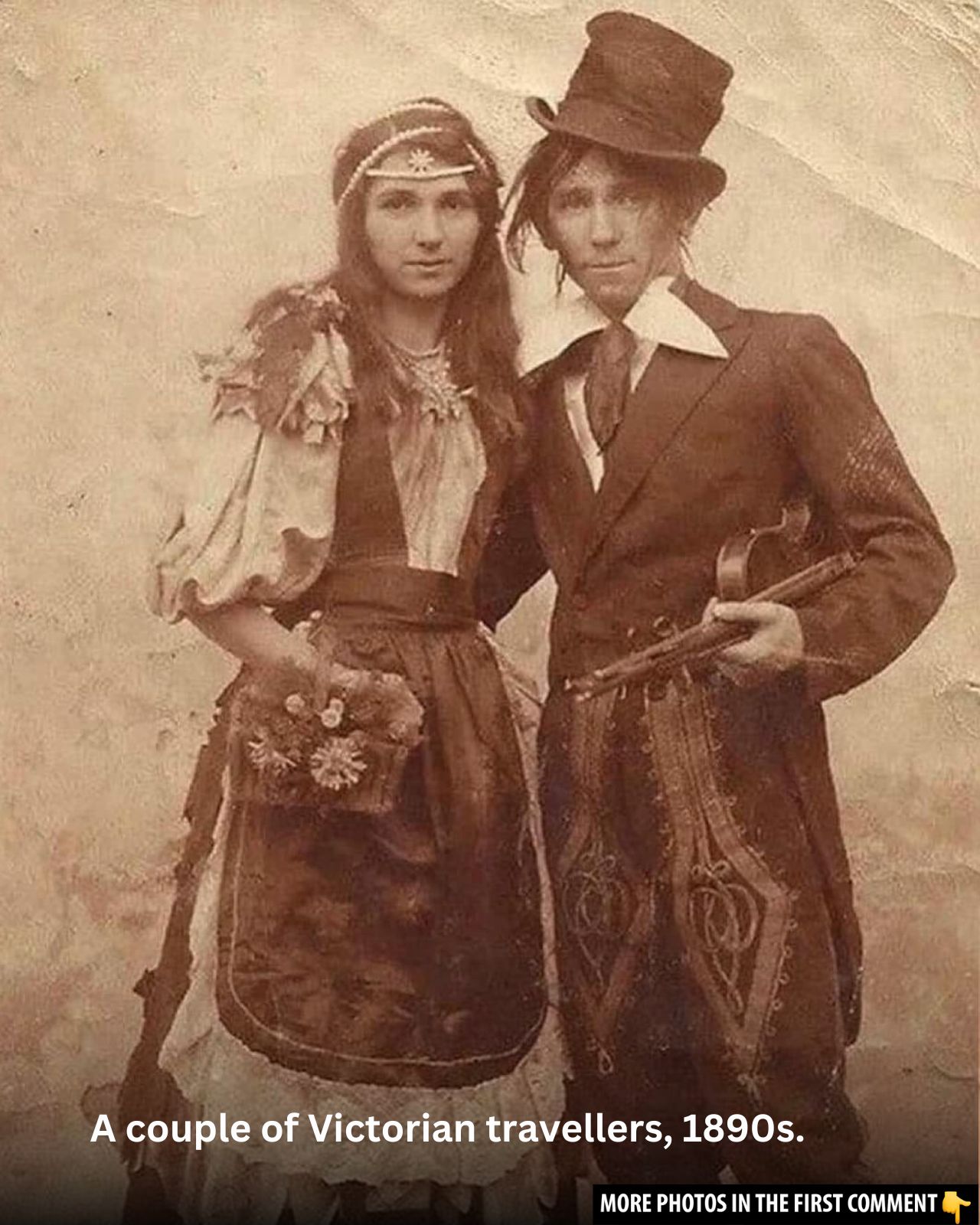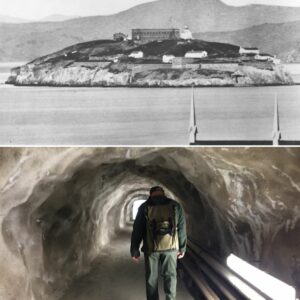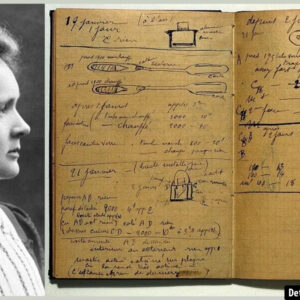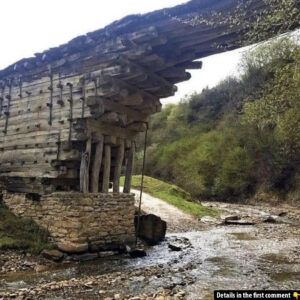In the late 19th and early 20th centuries, Egypt was a land of wonder, intrigue, and adventure, drawing countless Victorian tourists eager to witness its ancient treasures. These travelers, often dressed in full formal attire, embarked on daring expeditions to explore the pyramids, temples, and sphinxes—witnessing history firsthand in a way that seems unfathomable today. As we step back into this bygone era, vintage photographs capture the essence of these expeditions, showcasing a time when the fascination with Egypt’s antiquities was at its peak. These stunning images offer a rare glimpse into the world of Victorian tourists whose visits to Egypt were not just a form of escapism but a symbol of their era’s fascination with archaeology, exploration, and ancient civilizations.
A Journey Back in Time: Touring the Great Pyramids
The Great Pyramid of Giza, one of the Seven Wonders of the Ancient World, has long been a symbol of Egypt’s grandeur. In the 19th century, Victorian tourists were drawn to its mysterious allure, often making the long journey to climb its steep stone steps. But unlike today, where tourists are strictly prohibited from climbing the pyramids, these early adventurers had the freedom to scale the monumental structures, some even taking photographs atop them.
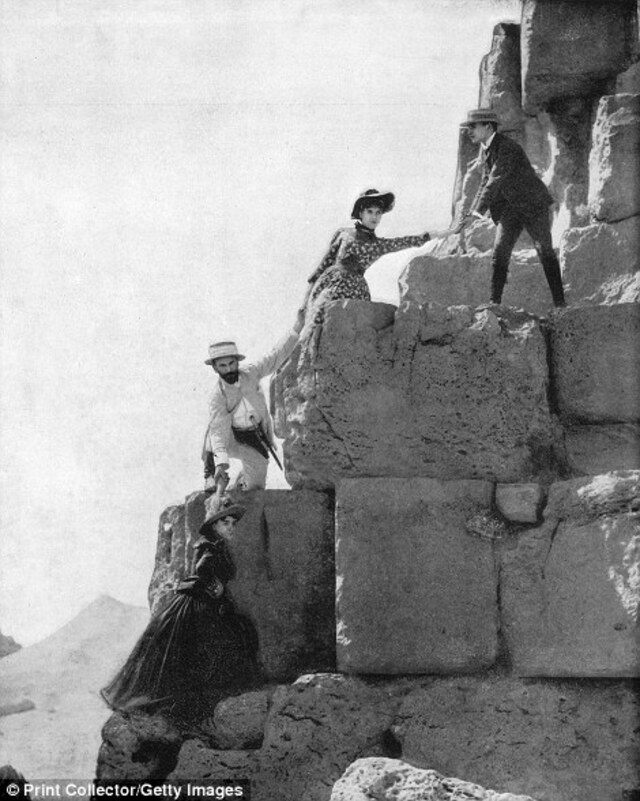
What is most astonishing about these vintage photos is the attire of the tourists: three-piece suits for men, long formal dresses for women, and wide-brimmed hats for all. This formal wear, far from practical for the rugged, hot terrain of Egypt, serves as a reminder of the era’s high regard for fashion, even when exploring some of the most remote and challenging locations on Earth. These tourists, seemingly unaware of the risks they were taking, embodied a sense of boldness and curiosity that defined the Victorian era.
Video
Watch the video to explore daily life in Egypt, both ancient and modern, as seen in 1925! Don’t miss this fascinating look at the country’s culture and history.
Tourist Interactions with Egypt’s Iconic Sites
For many of the early European visitors, Egypt’s ancient temples were not just places of historical significance, but also venues for leisure and social gatherings. In a surprising departure from modern tourism, many Victorian tourists are captured dining inside Egyptian temples, surrounded by hieroglyphics and ancient stone structures.
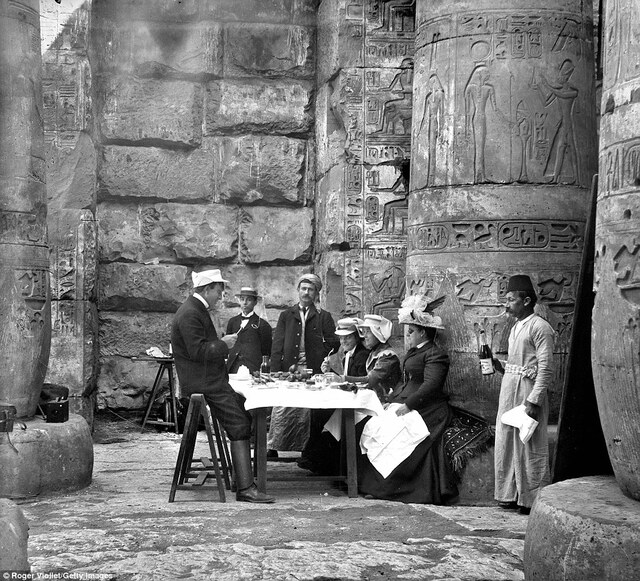
A photograph from 1898 shows a group of well-dressed Europeans enjoying a meal inside a grand temple, a local waiter serving wine to the group. The juxtaposition of formal clothing against the ancient backdrop creates an intriguing scene, one that reflects the Victorian fascination with experiencing history in a direct, almost personal way. These early tourists also took time to rest after their meals, often reclining on the stone floors of the temples, enjoying the tranquility of a place that had been silent for centuries.
While the idea of dining inside a temple seems absurd by today’s standards, it is an example of how the early 20th-century mindset treated ancient monuments not only as places of awe but as part of a social and recreational experience. It also highlights the somewhat cavalier attitude toward cultural preservation during the time.
The Fascination with the Sphinx and Egyptian Antiquities
Along with the pyramids, the Sphinx of Giza was one of the most iconic symbols of ancient Egypt. These monumental structures were both awe-inspiring and mysterious, drawing the attention of countless Victorian tourists. In photographs from the late 19th century, tourists are often seen sitting on top of camels, gazing up at the Sphinx, or posing with the pyramids in the background.
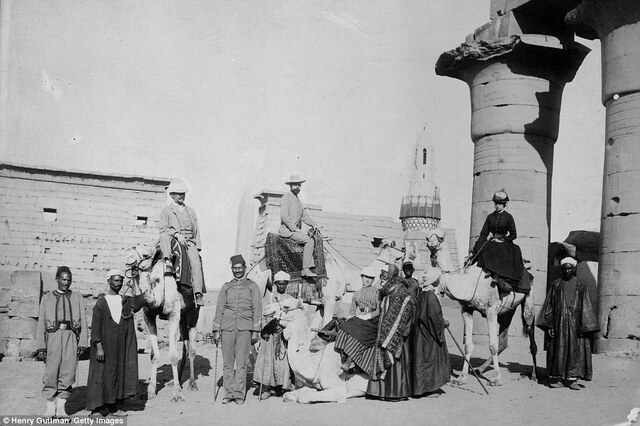
These images offer a fascinating look at the early days of archaeology and Egyptology, during a time when European powers had a significant interest in uncovering and preserving Egypt’s ancient heritage. Many of the tourists depicted in these photos were not just casual vacationers—they were part of a larger wave of individuals who contributed to the discovery and documentation of Egypt’s lost past.
These images were also part of a broader European fascination with the exotic. Egypt was a place that symbolized the mysteries of ancient civilizations, and to visit it was to partake in a sort of intellectual and cultural journey. For many Victorians, seeing the Sphinx and the pyramids was a way to connect with the classical world, just as much as it was about personal adventure and discovery.
The Role of Photography in Preserving History
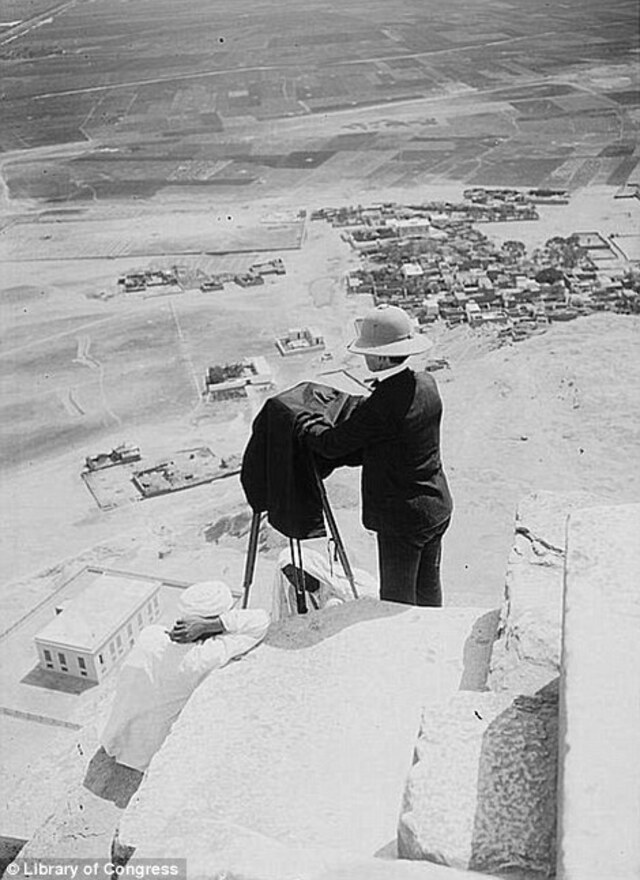
Photography played a crucial role in documenting these early journeys to Egypt, and the images from this period are some of the most compelling historical records we have of Victorian tourism. Cameras, often bulky and cumbersome by modern standards, were carried by photographers who ventured to remote locations to capture these historical moments. These photographs were then printed and sold as souvenirs, allowing tourists to take a piece of the past back home with them.
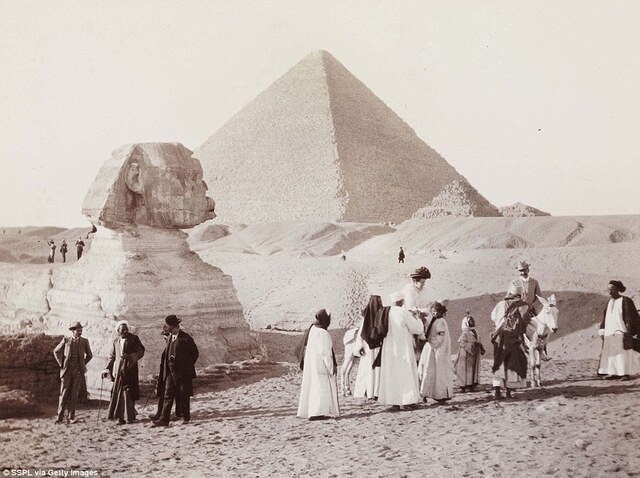
Many of these photographs were carefully staged, with tourists positioned in dramatic settings in front of ancient ruins. The use of these images as mementos reflected the Victorian era’s obsession with travel and discovery, as well as the desire to document and immortalize one’s experiences in far-off lands. In some cases, tourists even hired local guides or photographers to help stage the perfect shot, ensuring that their adventures were captured for posterity.
Tourism in the British Occupied Egypt: 1882-1914
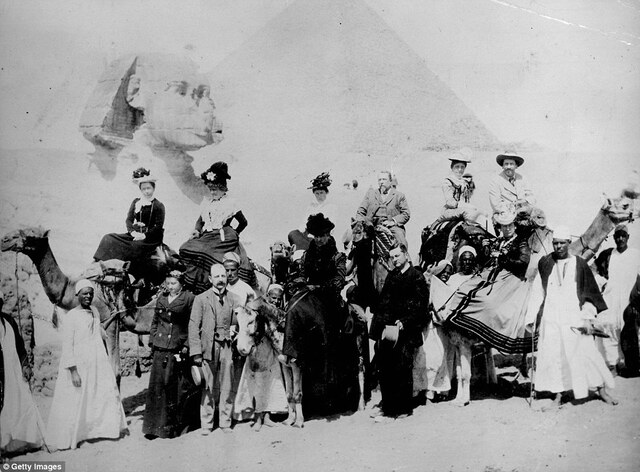
During the British occupation of Egypt, from 1882 to 1914, the country became an essential stop on the Grand Tour for European aristocrats. The British presence in Egypt not only influenced the local economy and culture but also shaped the way that tourists experienced the country’s ancient monuments. Under British rule, the accessibility of Egypt’s ancient wonders was expanded, making it easier for tourists to visit and explore sites like the pyramids, temples, and tombs.
While the British occupation was a time of political upheaval for Egyptians, it also marked the rise of Egypt as a prime tourist destination. Many photographs from this period feature Victorian tourists in front of landmarks, often accompanied by locals who assisted in guiding them through the harsh desert terrain.
The British occupation also fostered an appreciation for Egypt’s ancient past, and it is no surprise that it was during this period that some of the most significant archaeological discoveries in Egyptian history were made.
The Lasting Legacy of Victorian Egyptology and Tourism
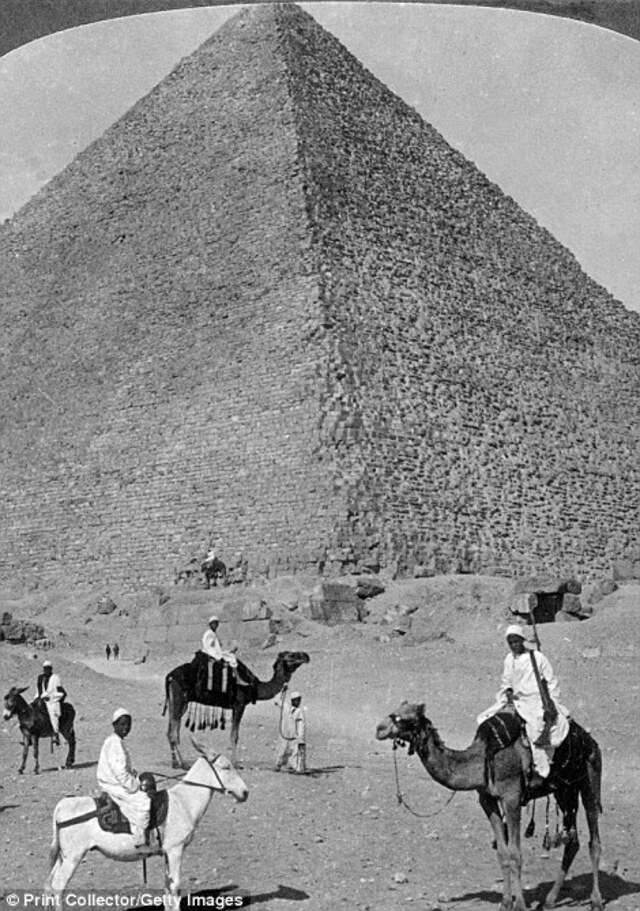
The Victorian fascination with Egypt has had a lasting impact on the way we perceive ancient Egypt today. Many of the images taken during this period helped shape the global perception of Egypt as a land of mystery and wonder. The interest in Egyptian antiquities sparked a wave of archaeological exploration, which continued into the 20th century and beyond.
Today, Egypt remains one of the most visited countries in the world for tourists seeking to explore its rich history and uncover the secrets of the pharaohs. However, as we look back at these vintage photographs, it is clear that the experience of visiting Egypt has evolved considerably. What was once a daring and somewhat reckless adventure for Victorians in formal attire has now become a more regulated and respectful journey through history.
Gallery: Vintage Photographs of Victorian Tourists in Egypt
These vintage photographs provide an extraordinary window into the past, showcasing the bravery, curiosity, and sense of adventure that defined Victorian tourism. From camel rides to dining inside temples, these images not only capture the landmarks of ancient Egypt but also the spirit of the people who were fortunate enough to witness them.
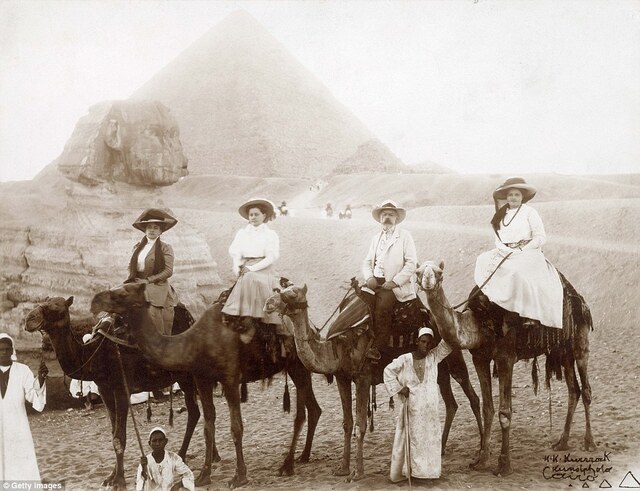
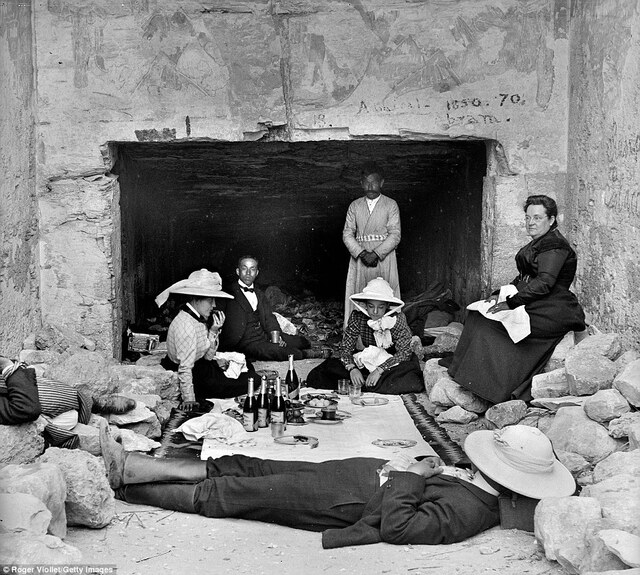
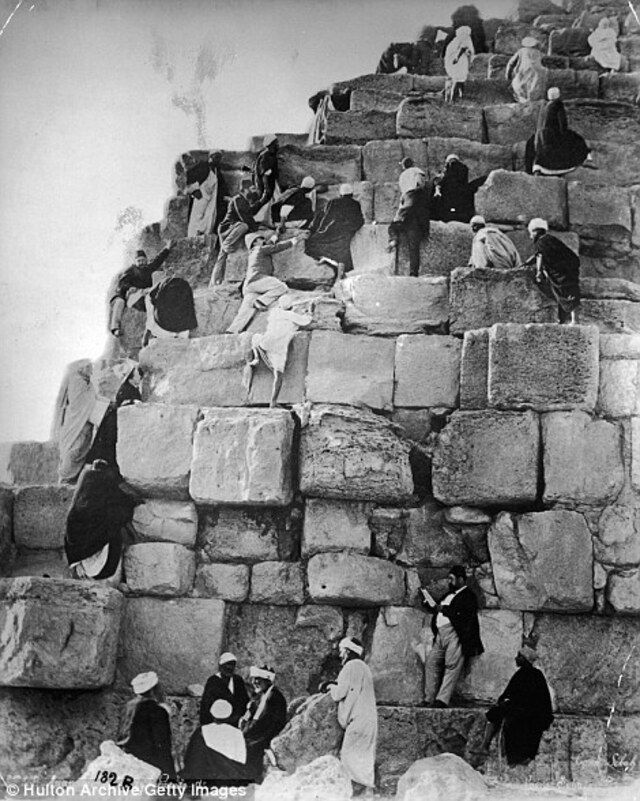
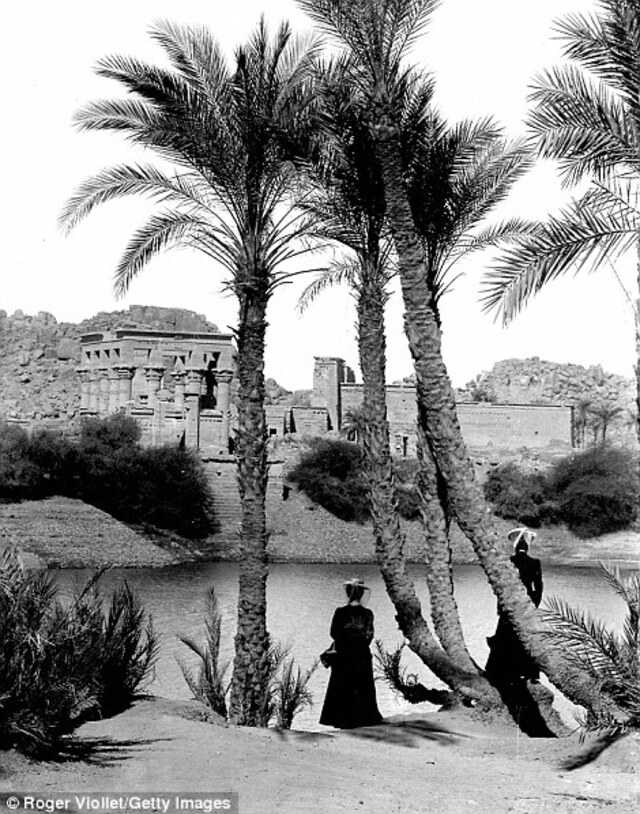
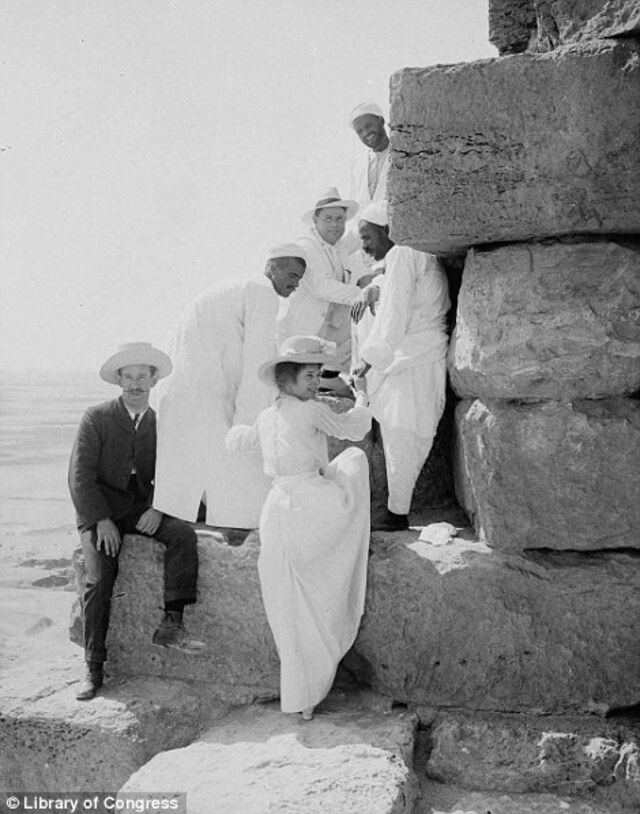
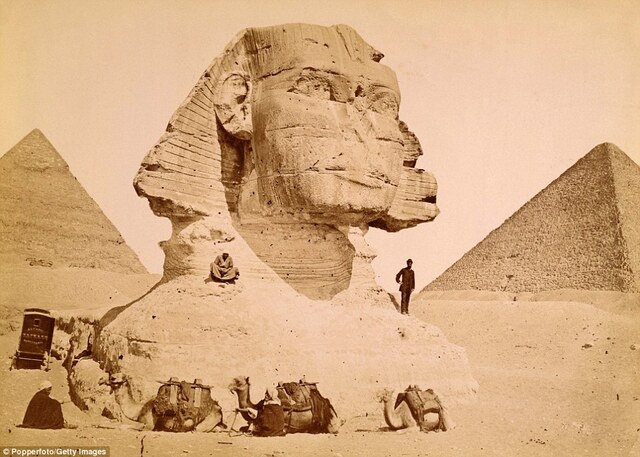
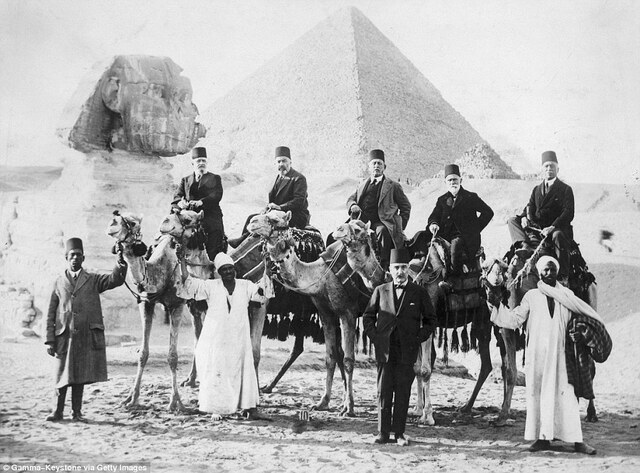
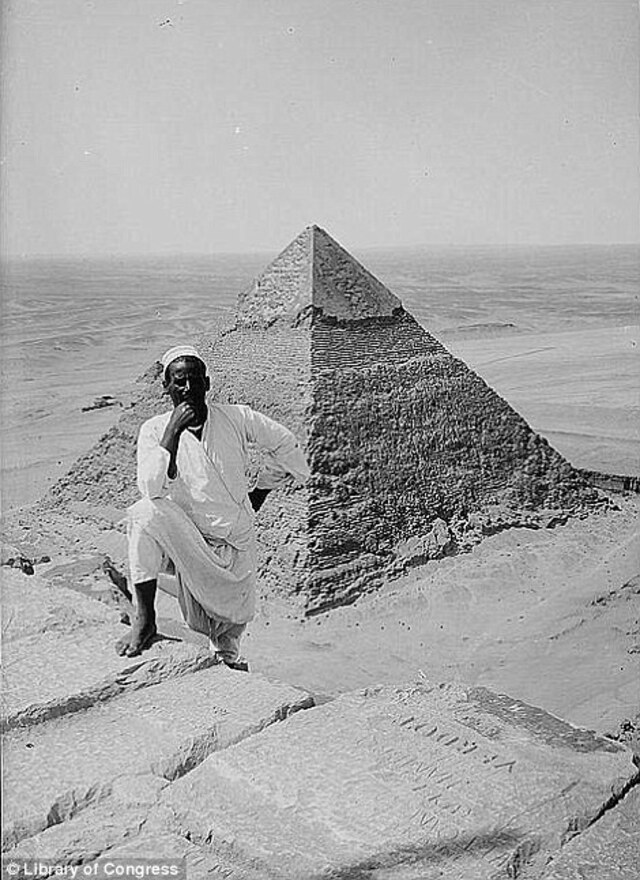
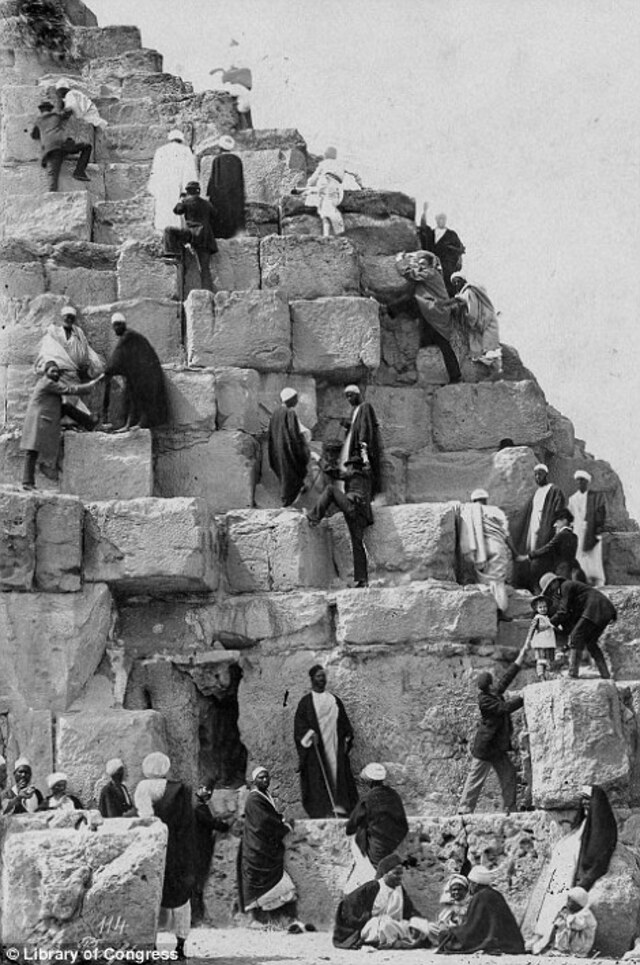
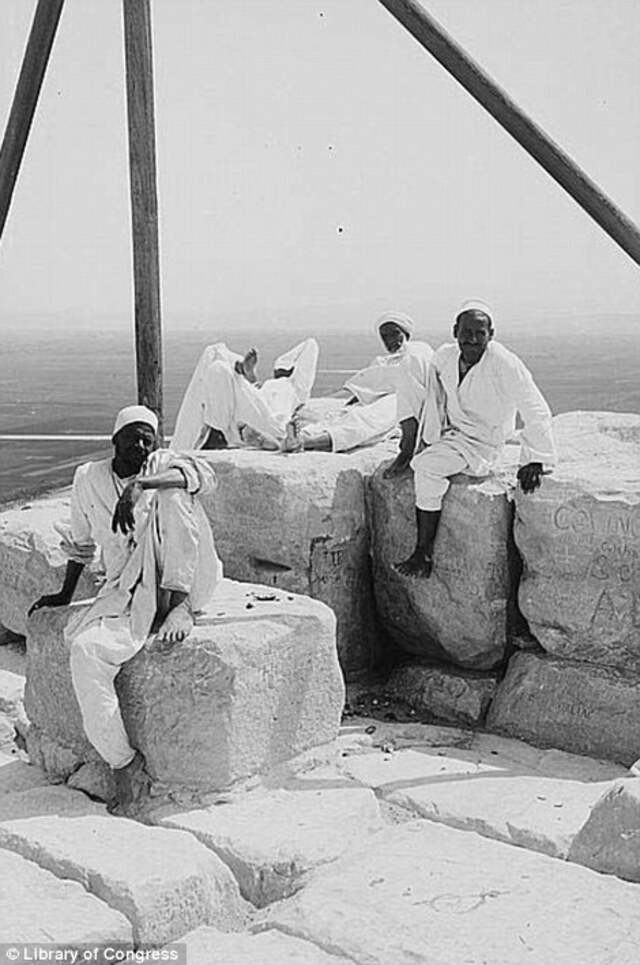
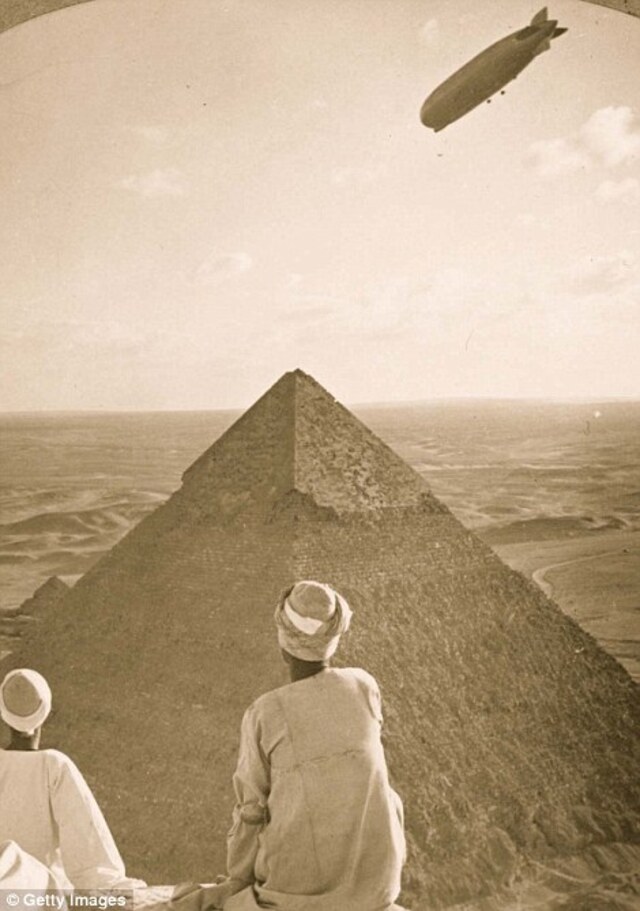
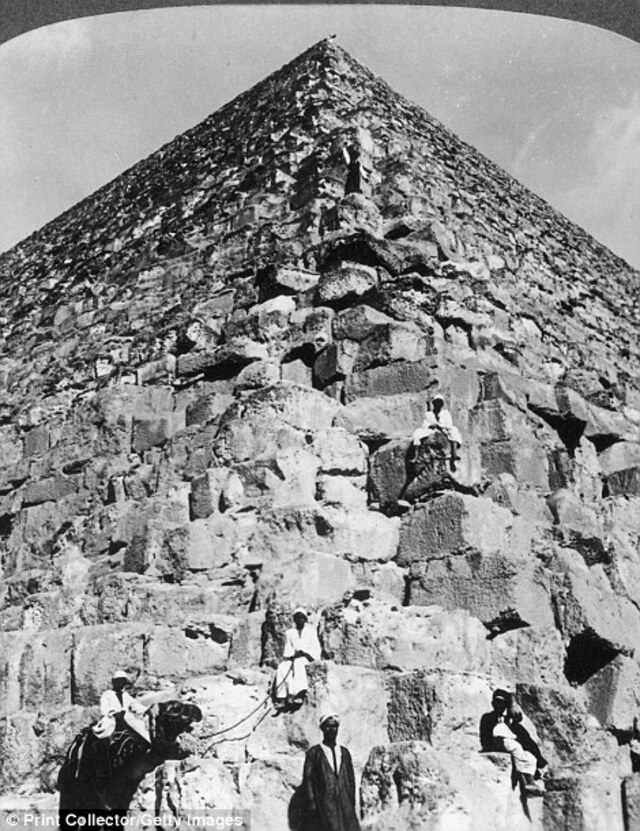
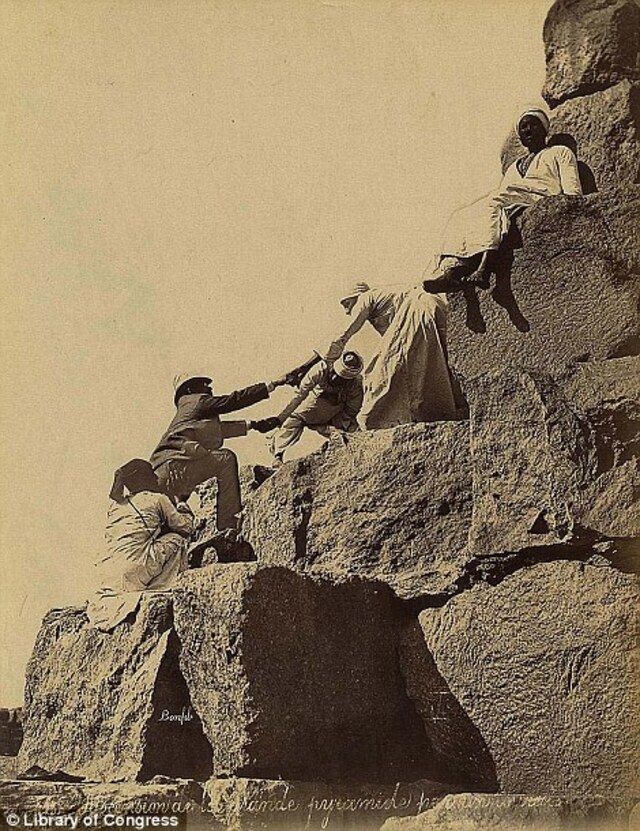
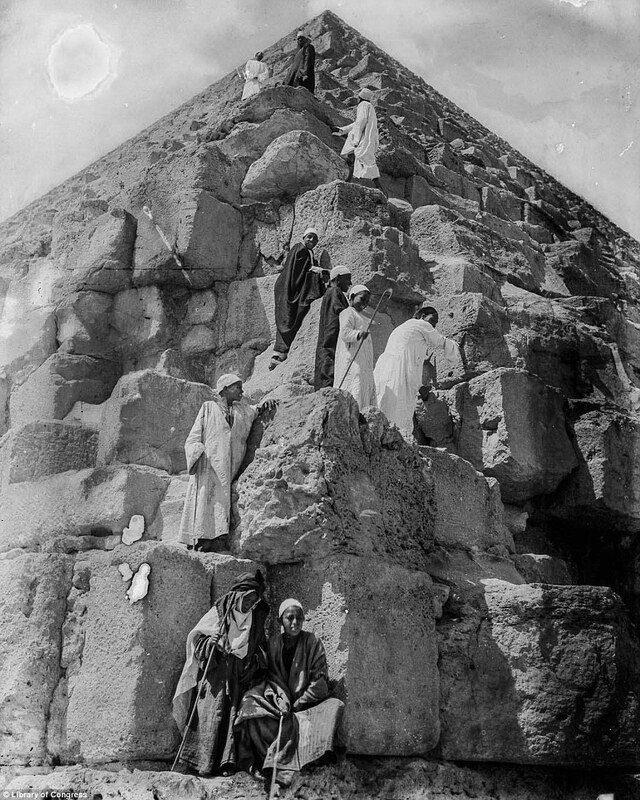
Video
Watch the video to discover the 15 oldest buildings in the world! Don’t miss this incredible journey through ancient architecture and history.
Conclusion: Revisiting Egypt Through the Lens of History
As we reflect on the photos of Victorian tourists exploring Egypt’s ancient wonders, we are reminded of how much has changed in the world of travel and tourism. The daring explorers of the past who climbed pyramids in their formal attire are now part of a rich legacy of discovery and fascination. Their adventures paved the way for modern tourism in Egypt, and their photographs serve as lasting reminders of the enduring allure of one of the world’s most iconic ancient civilizations.
